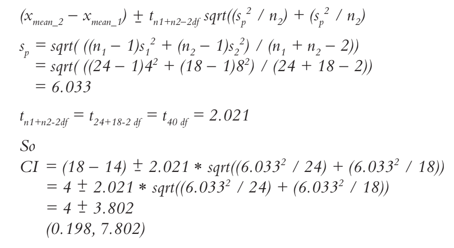A city council wants to know whether residents of one neighborhood tend to use city parks more often than residents of another neighborhood. After sampling both popula- tions, they find that of 24 residents from neighborhood A, the average number of trips to a park per year was 14, with a standard deviation of 4. For 18 residents in neighbor- hood B, the average number of trips was 18, with a standard deviation of 8.
a. Find a 99% confidence interval for the difference in park trips per year, assuming that
the sample variances are not necessarily equal.
Assuming that the variances are not equal, we find
b. Find a 95% confidence interval assuming that the variances are equal.
Assuming that the variances _are_ equal, we find
A. 
B. 
You might also like to view...
What is the difference between party regulars and candidate activists?
a. Party regulars are more uncompromising than candidate activists. b. Party regulars are more concerned with party cohesiveness, while candidate activists tend to be ideologically driven. c. Party regulars tend to be ideologically driven, while candidate activists are more willing to compromise. d. Party regulars focus on individual candidates, while candidate activists focus on issues.
Profound difference in perception, outlook, and behavior can often be traced to differences in political culture
a. True b. False Indicate whether the statement is true or false
Which model of bureaucracy has a goal of reducing patronage and ensuring accountability?
a. the Weberian model b. the monopolistic model c. the patronage model d. the acquisitive model
According to the UN Charter, the use of force is legal, if the effort is multilateral in nature
Indicate whether this statement is true or false.